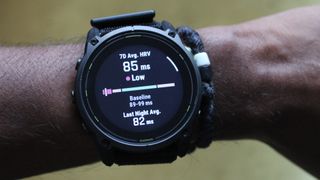
The full “Cold Moon” — also known as the “Long Nights Moon” and the “Moon Before Yule” — will be best seen during dusk at the time of moonrise where you are on Sunday, Dec. 15. However, there are plenty of oddities about this month's full moon — the final full moon of 2024.
Here's everything you need to know about this weekend's Cold Moon: 1. It’s Not A ‘Real’ Full Moon The Cold Moon on Dec. 15, 2024, will be the least illuminated of the year, with only 99.

82% of its surface lit, according to Timeanddate.com . This slight shortfall will occur because the moon’s orbit is tilted relative to Earth’s orbit around the sun, causing the moon to rarely align perfectly opposite the sun.
Consequently, the moon’s face is almost never 100% illuminated during the Full Moon phase — but this weekend's is the least illuminated of the entire year. The next 100%-lit full moon will be on Mar. 29, when the Worm Moon will move through Earth's shadow to cause the first total solar eclipse since 2022.
2. It’s The Most Northerly Moonrise And Moonset For 19 Years The full Cold Moon will rise and set at its most extreme northerly points on the horizon on Sunday, Dec. 15, 2024.
The moon has an 18.6-year cycle during which the exact places it rises and sets on the horizon waxes and wanes. At each end of that cycle is a major lunar standstill, also called a lunistice, a rare celestial event that occurs when Earth and the moon are at their maximum tilts.
That leads to the moon rising and setting at the extremes of its range. These extreme rise and set positions occur during a two-year period and are known as both a major lunar standstill and a lunistice . 3.
It Will Shine Close To Jupiter And Three Guardian Stars This month, the solar system will put on a warning light for the full moon. Look to the east just before moonrise, and you'll see bright Jupiter. Wait a few minutes, and the Cold Moon will rise beneath it.
Jupiter is just a week past its annual opposition, which sees it at its brightest and best for 13 months as Earth gets in between it and the sun, shortening the distance. Once it’s risen you’ll also see three bright stars around it. You’ll find Capella in Auriga to its upper left, Pollux in Gemini to its lower left and Betelgeuse in Orion to its lower right.
4. It Happens During The Geminids Meteor Shower The Cold Moon's light at night will lessen the impact of the Geminid meteor shower, which peaks 24 hours before the full moonrise. The best time to view the Geminid meteor shower is around 2 a.
m. local time, when the radiant point is highest in the sky. Up to 120 "shooting stars" per hour can be visible, with Geminds often bright and colorful.
Keep an eye out for a multicolored “Earth-grazer” fireball, a very bright meteor that briefly enters Earth's atmosphere. 5. It’s The Final Full Moon Of Autumn With the solstice coming a week later on Dec.
22, the Cold Moon is the third and final full moon of the current astronomical season of autumn (fall). Although meteorological winter in the Northern Hemisphere begins on Dec. 1, astronomical winter doesn't start until the solstice.
Wishing you clear skies and wide eyes..















